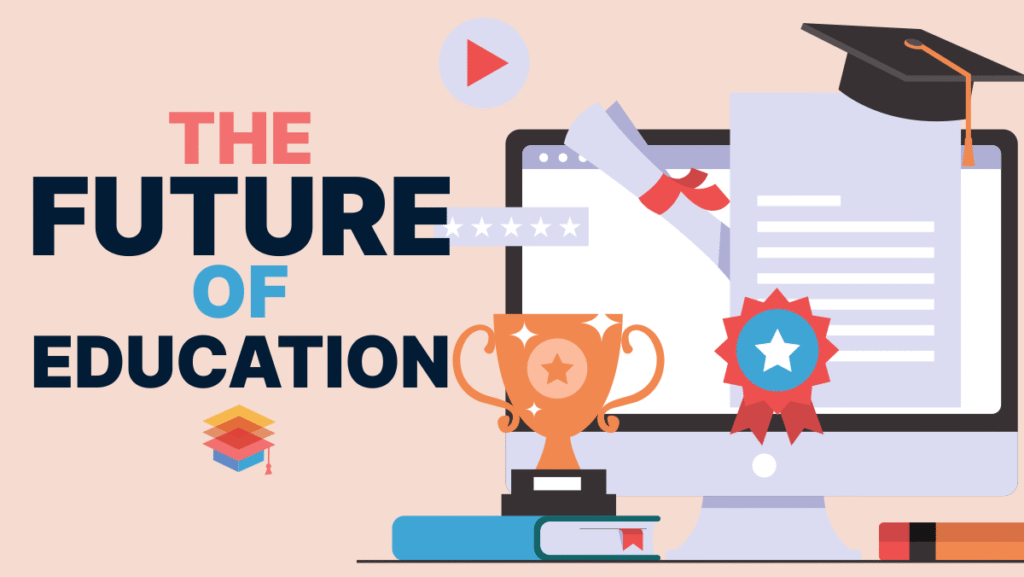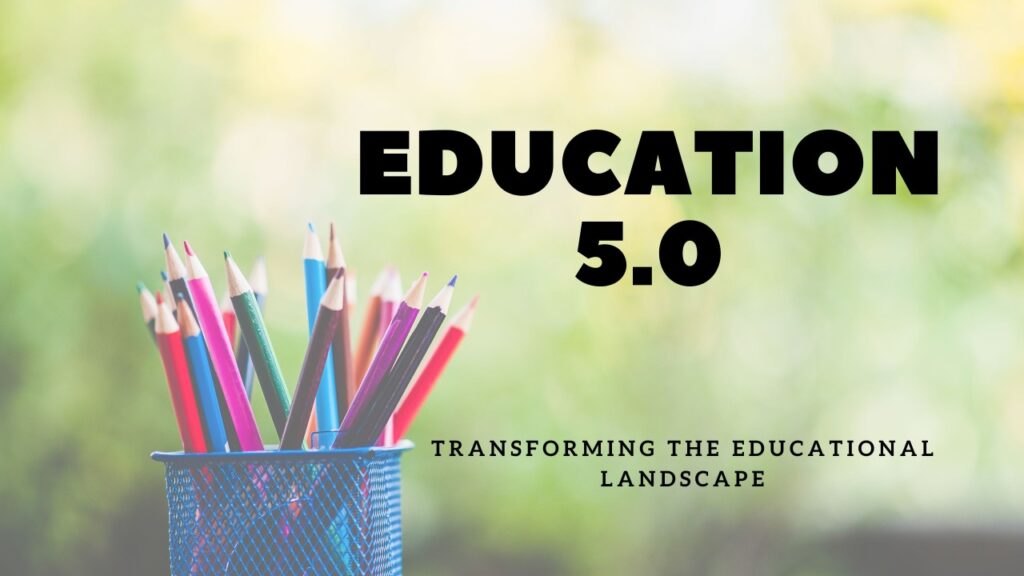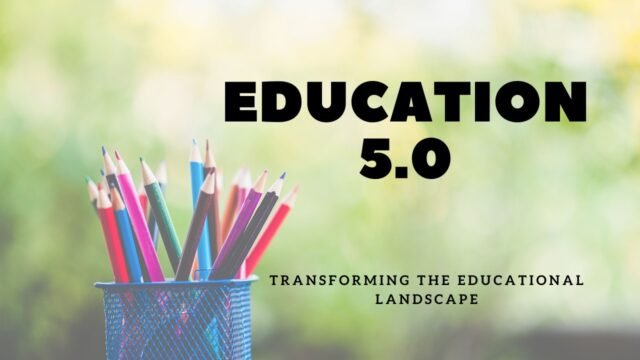We’re entering a transformative period in education—guaranteed not just by necessity, but by innovation. Post-pandemic shifts toward remote and hybrid learning have evolved further into Education 5.0, a bold leap forward where classroom walls dissolve into digital ecosystems. Powered by emerging technologies, this model redefines learning as immersive, tailored, and inclusive. It’s not just a philosophy—it’s becoming reality.
Table of Contents

From 1.0 to 5.0: A Century of Educational Evolution
Education hasn’t just grown; it’s completed revolutions. We’ve traversed from rote, teacher-centered classrooms (Education 1.0), through early digital adoption (2.0), collaborative creativity (3.0), and smart interactivity (4.0)—and today have arrived at Education 5.0, which is all about human-centric, tech-enhanced learning.
At its core, Education 5.0 harnesses AI, blockchain, VR/AR, IoT, big data analytics, and high-speed connectivity to support highly personalized, richly social, yet globally accessible learning environments.
What Education 5.0 Demands
The paper underscores several essential requirements for implementing Education 5.0 effectively:
- Personalized Learning
Adaptive systems powered by AI and learning analytics tailor learning pathways to each student’s pace, interests, and comprehension levels. - Connected Collaboration
Tools like VR classrooms and IoT networks facilitate rich peer interactions and teacher-student engagement that bridge physical and virtual spaces. - 21st-Century Skill Cultivation
Beyond memorisation—problem-solving, critical thinking, creativity, communication—driven by immersive and gamified learning activities. - Universal Flexibility and Accessibility
Cloud computing and global internet access enable anytime-anywhere education, breaking down geographic and economic barriers. - Data-Driven Decisions
Learning dashboards powered by analytics enhance teacher effectiveness and inform on-the-fly pedagogical adjustments. - Security & Privacy by Design
Blockchain and encrypted systems protect sensitive learner information and build stakeholder trust. - High-Speed Infrastructure
Reliable 5G and broadband networks are crucial for virtual labs, real-time simulations, and cloud-based platforms. - Well-being Integration
IoT sensors and real-time monitoring help track student engagement and health, supporting mental, physical, and emotional vitality. - Technological Adaptability
Modular, scalable systems using blockchain and cloud architectures ensure adaptability for evolving societal and workforce needs. - Educational Gamification
Game-based learning keeps learners motivated, improves knowledge retention, and encourages positive attitudes toward problem-solving.

Powering Education 5.0: The Tech Arsenal
Artificial Intelligence & Machine Learning
AI adapts content to the learner, automates mundane tasks, flags gaps in understanding, detects plagiarism, and supports both students and teachers.
Extended Reality (XR) and Metaverse
Augmented, virtual, and mixed reality turn abstract concepts into hands-on experiences—exploring ecosystems, dissecting heartbeats, or visualising architectural marvels in immersive 3D.
Blockchain
Immutable, decentralised ledgers ensure privacy and authenticity for credentials, attendance, and even intellectual property—a safeguard for modern student records.
Big Data & Analytics
Analytics track performance metrics—attendance, satisfaction, engagement—and inform interventions when students struggle, ensuring no child falls behind.
IoT & 5G Connectivity
Wearables and sensors measure well-being; 5G makes streaming VR labs and remote classrooms seamless—anytime, anywhere.
Real-World Impacts: Making Learning Matter
- Learner-Centered Experiences
From AI tutoring English to VR language labs, students learn at their own pace, exploring interests deep-first. - Enhanced Engagement Metrics
Gamified platforms measurably improve participation and reduce dropout rates through interactive storytelling and challenge-based milestones. - Equity Through Access
Rural students join virtual labs and global classrooms; economic barriers shrink where devices and broadband are democratised. - Holistic Student Health
Real-time well-being insights allow for timely intervention, improving classroom climates and reducing anxiety cycles.
Challenges in Navigating the 5.0 Landscape
Despite its promise, implementing Education 5.0 isn’t without hurdles:
- High Costs & Infrastructure Gaps
Advanced hardware, sensors, and high-speed networks demand significant resources, especially in less-resourced regions. - Teacher Training & Resistance
Instructors must master new technologies and pedagogies. Without professional development, systems risk stagnation. - Deepening Digital Divide
Not all students have consistent internet or device access. Education 5.0 may unintentionally increase inequity without intervention. - Content Scalability
Creating VR lessons, AI modules, and interactive courses takes time and money—challenges for cash-strapped institutions. - Security & Ethical Considerations
Data breaches, unauthorised monitoring, and privacy erosion are real threats to trust. - Lack of Standardisation
Diverse tools and platforms lacking interoperability complicate student and data mobility. - Limited Efficacy Research
Education 5.0 is still young; robust studies are needed on outcomes and best practices. - Metaverse Practicality
Virtual worlds require VR gear, high bandwidth, and intuitive interfaces—not always feasible or equitable. - Balancing Online and Offline Learning
Too much virtual engagement risks isolation; too much structure risks neglecting tech’s benefits.
A Roadmap to the Future
To fully bring Education 5.0 to life, stakeholders must:
- Prioritize Investment & Access
Governments and NGOs should fund broadband, devices, and infrastructure. - Empower Teaching Talent
Offer continuous training in AI-guided methods, immersive tech, and classroom design. - Design for Privacy & Security
Establish transparent data policies and secure systems with built‑in safeguards. - Develop Interoperable Standards
Forge open protocols for credentials, APIs, and learning objects. - Scale Quality Content
Support the creation of modular, shareable, and culturally adaptive XR lessons and AI modules. - Rigorous Research & Evaluation
Conduct studies to measure the impact of tech-enabled learning on cognition, equity, and social-emotional well-being. - Forge Cross-Sector Collaboration
Bring together experts from universities, tech companies, and governments to pioneer and pilot new educational models.

Conclusion: The Promise of Education 5.0
Education 5.0 is more than a buzzword—it’s a vision for transforming how humans learn. It offers highly personalised, interactive, accessible, and secure learning for all. But its success demands investment, thoughtful design, and bridging divides.
Policymakers, educators, technologists, and communities must collaborate now. Because when technology elevates human potential—rather than replaces it—that’s when education becomes truly revolutionary.
About the Source
This article builds upon “Education 5.0: Requirements, Enabling Technologies, and Future Directions”, authored by Shabir Ahmad et al., and published on July 29, 2023, via arXiv.
Join Our Social Media Channels:
WhatsApp: NaijaEyes
Facebook: NaijaEyes
Twitter: NaijaEyes
Instagram: NaijaEyes
TikTok: NaijaEyes
READ THE LATEST EDUCATION NEWS















![Tragic Incident: Fans of Seyi Vibez Die in Fatal Accident After Electrifying Lagos Concert [VIDEO] Seyi Vibez](https://naijaeyesblog.com/wp-content/uploads/2025/08/Seyi-Vibez-180x135.avif)
























